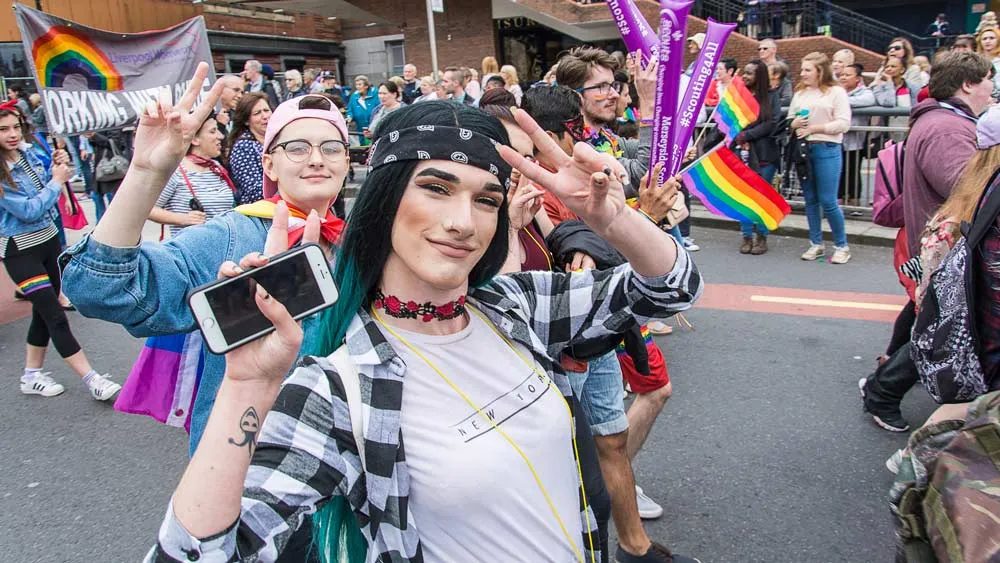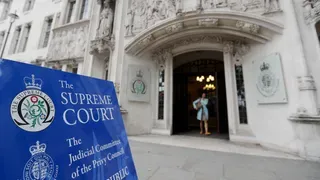September 22, 2015
Looking at Health and Faith Disparities on Bisexual Visibility Day
Winnie McCroy READ TIME: 8 MIN.
September 23 is Bisexual Visibility Day, and it's a chance to take a closer look at the most maligned of the LGBT community, the bisexuals. Scorned by straights for being gay, and rejected by gays for being 'on the fence' or hyper-sexualized folks getting with 'anything that moves,' bisexuals face stigma in society, the health care system, and communities of faith. EDGE spoke with Sean Cahill, Director of Health Policy Research at The Fenway Institute of Fenway Health, and Marie Alford-Harkey, Deputy Director of The Religious Institute, to share their assessment of these risk factors.
"People who are bisexual are actually at higher risk for poor health than lesbians, gay men, and straight people," said Cahill, noting that they report higher rates of smoking and use of alcohol and other substances, and experience higher rates of psychological stress than lesbians, gay men, and straight people, which can be attributed to higher rates of social stress.
"For example, it can be harder for bisexual people to be out," he continued. "If a bisexual woman is partnered with another woman, she is assumed to be lesbian; if she is partnered with a man, she is assumed to be heterosexual. Among LGBT older adults, bisexual and transgender people are less likely to be out than gay men and lesbians. Even among the broader LGBT community, there still exists a belief that bisexuality is not a real sexual orientation."
This can make it more difficult for people to self-identify as bisexual to health care providers, particularly if they are in a long-term relationship and there is an assumption that they are either lesbian or gay, or heterosexual.
Cahill said it is important for providers to be affirming of bisexual identity, as well as to understand that a woman in a same-sex relationship may have earlier had sex with men, which could expose her to human papillomavirus, a risk factor for cervical cancer. Both identity and sexual behavior are important things to discuss with providers.�
"As with the general population, there can be broad misunderstandings among healthcare providers about bisexuality. It is important for providers to ask questions about sexual orientation and gender identity so that their patients feel comfortable being out with them, and so that they are understanding the health risks that their patients may be vulnerable to. For example, a study based in the United Kingdom that was published last January found that bisexual women experience worse mental health than lesbians and heterosexual women."
To counter this, bisexual should build strong family support systems. They should feel comfortable being out about being bisexual among their family and friends. It is important to have a healthcare provider with whom they can be out and can discuss any health issues related to being bisexual. Ceasing tobacco use, eating well and getting regular exercise are among the most important things anyone can do for good health.�
This is of growing importance, as Cahill says more young people are comfortable identifying themselves as bisexual, or resisting any labels altogether. A recent study by YouGov, a UK-based global survey and opinion organization, found that half of those age 18-24 do not identity as heterosexual and 43 percent say that they fall somewhere in a range of bisexuality when it comes to their sexual orientation. In general, women are more likely to identify as bisexual than lesbian, while men are more likely to identify as gay than bisexual.�
"The idea that sexual orientation exists on a continuum was quite radical when it was first introduced to the public by Alfred Kinsey in the 1940s. But with each passing year, never mind generation, we see increased acceptance for those who are lesbian, gay, bisexual or transgender," said Cahill. "Opinion polls consistently show that young people support marriage equality and civil rights for LGBT people at much higher rates than older people. We make it clear that Fenway Health serves all members of the community, including people who are bisexual, transgender, or heterosexual."
Bisexuals and Faith Communities
While many mainline congregations have done a good job of welcoming gay and lesbian people and some progressive congregations have even begun to pay attention to the needs of transgender people, bisexuals are still largely ignored, said Alford-Harkey, Deputy Director for The Religious Institute.
There are many reasons for this.�Bisexual people are largely invisible in faith communities and society because people make assumptions about a person's sexual orientation based on the sex or gender of their partner. Many harmful myths and stereotypes exist about bisexual people, and cause them to be marginalized by mainstream society and, sadly, by LGBTQ communities.�
Alford-Harkey shared some of the many suggestions in the guidebook�Bisexuality: Making the Invisible Visible in Faith Communities.
Some of them include:�
� Assume that bisexual people are present in the congregation. There are far more people who are attracted to and engage in behaviors with people of more than one sex or gender that is readily apparent. Truly welcoming bisexual people will directly affect many more people than those who identify as bisexual.�
� Ensure that bisexual people are named in the congregation's welcome statement. Use words, rather than the LGBTQ acronym.
� Encourage congregational leaders (lay and ordained) to become educated about bisexuality.�
� Use bisexual-inclusive language like "different-sex couple" rather than "straight couple."
� Ensure that sexuality education (yes, faith communities should offer sexuality education) includes information that affirms bisexuality as a sexual orientation.�
� Challenge bisexual invisibility and negative stereotypes about bisexual people when they come up in the media, the faith community, and the denomination.�
� Celebrate Bisexual Awareness Week with a hymn, a prayer, an education offering or a responsive reading.�
"Welcoming bisexual people in congregations absolutely leads to healthier faith communities. Bisexual people suffer from the harmful effects of discrimination, marginalization, and invisibility," said Alford-Harkey.
Bisexuals are at greater risk than lesbian, gay, or straight people for mental health issues and physical and sexual health problems. They also face greater stressors in daily life, and bisexual youth are at particular risk. Because religion has done such harm to LGBTQ people, faith communities need to be places where that harm can be healed.
"I've seen the transformative power of talking about bisexuality in faith communities many times as I've presented at congregations and conferences about this work," said Alford-Harkey. "From the young bisexual woman who burst into tears when I assured her that God loves her exactly as she is, not in spite of her sexuality but because it is a beautiful part of who she is, to the gay man who told me that our workshop had changed his negative feelings about bisexuals, healing happens whenever faith communities move beyond the binaries and encourage authenticity and create safe spaces for people of all sexual orientations and gender identities."
On Bisexuality Awareness Day, take the time to make sure that the 'B' in LGBT gets the same inclusion and consideration as we have all fought so hard for.
Winnie McCroy is the Women on the EDGE Editor, HIV/Health Editor, and Assistant Entertainment Editor for EDGE Media Network, handling all women's news, HIV health stories and theater reviews throughout the U.S. She has contributed to other publications, including The Village Voice, Gay City News, Chelsea Now and The Advocate, and lives in Brooklyn, New York.





